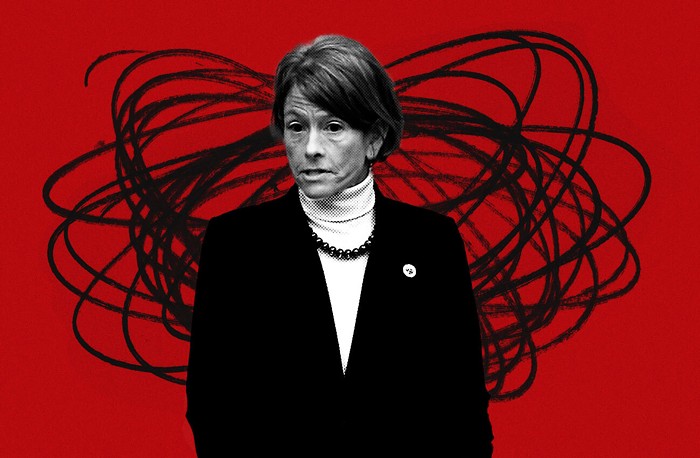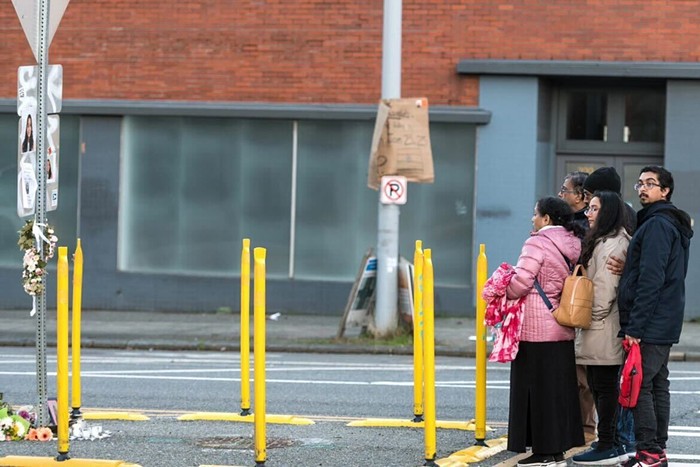
Omicron is still spreading through King County like salmonella in a tub of warm mayonnaise, but the variant now shows signs of easing up. According to data on Public Health – Seattle & King County’s online dashboard, in the past seven days the number of COVID-19 cases has declined by 21%. Meanwhile, hospitalizations seem to be plateauing, which Public Health Officer Jeff Duchin described as “very good to see.”
But before we bust out the Prosecco and start gyrating to mash-ups of “Stayin' Alive,” it’s worth remembering that COVID continues to hit certain groups harder than others – in particular, the region’s Latino population.
“COVID has really illustrated the social and health inequities faced by many communities, in particular, the Latino community,” says Mariel Torres Mehdipour, deputy health equity officer at PHSKC.
According to the University of Washington’s Latino Center for Health, as of December, Latinos made up 22% of Washington’s COVID cases, though they only accounted for 13% of the state’s population. A report issued by the center in October noted that COVID death rates for Hispanics in Washington were three times the rate of whites.
The reasons for these disparities are varied, says Leo Morales, an assistant dean at the University of Washington Medical School and co-director of the Latino Center for Health. Lack of insurance, untreated medical conditions such as diabetes, language barriers, employment in more vulnerable occupations, and more crowded, multi-generation living situations are all factors, he says.
“We know there are differences in terms of occupational exposures. For example, early on in the pandemic, the state health order had no effect on the case rates for Latinos. It wasn’t until stay-at-home was lifted that rates began to come down,” Morales says. That’s because Latinos make up a higher percentage of workers at jobs that can’t be done from home, whether those are in the service industry or agriculture.
Vaccination rates in the Latino population have also lagged behind the general population – though the situation is improving. As of September of last year, 55% of the state’s Latinos were fully vaccinated, which was a significant increase from a rate of 40% in July. In King County, the numbers are even better, with 78% of the Hispanic/Latino population having received at least two doses.

But there’s still a lot of work to be done, Morales says. Counties with high Latino populations in central and eastern Washington – including Adams, Franklin, and Yakima counties — have lower vaccination rates still in the range of 40 to 50%. More Spanish-language outreach, increased funding to community-based organizations, and requiring employers to offer paid sick days for immunizations would help, he notes. “For workers who rely on day labor, for example, lost days mean lost income, which can mean the difference between being able to pay for your housing and food or not.”
There’s currently no legislation proposed at the state level to mandate that businesses pay their employees while they get vaccines, though the Biden administration introduced a tax credit for businesses with fewer than 500 employees to cover time off for COVID vaccinations. “The onus needs to be put on the employer,” Morales says. “Employers need to provide this to allow employees the time to get vaccinated. Or the government needs to offer income replacement.”
Culture also plays a role in making the virus more dangerous for Latino families. Multigenerational households are common in the Latino community – as much by choice as from need. Mehdipour notes her own household contains several generations, and her family recently marked the first anniversary of her aunt’s death from COVID. “My cousin’s son is an essential worker and could not work from home, and the virus came into that household and took his life and a few days later took my Aunt’s life.”
Accurate medical information about masking, vaccinations, and testing in Spanish are critical, but these efforts need to be culturally appropriate, Mehdipour says.
One key strategy to addressing inequities in the Latino community involves working with entities in the community, Mehdipour says, whether that means respected individuals, nonprofits, businesses, or churches.
For more than a year, PHKC has hosted the weekly online video forum “Con Confianza y En Comunidad,” hosted by Manuela Slye, the first Latina leader of the Seattle Council Parent Teacher Student Association (PTSA). Confianza means “trust,” and the show has featured scores of trusted Spanish-speaking community members, medical professionals, attorneys, and faith-based leaders.
Morales notes that these sorts of culturally appropriate media communications, whether through streaming events, radio or social media posts, are essential. “In the past we’ve been largely passive in these efforts,” he says. “We need to do much more about being active, in multiple languages.”
The region’s Latino population is an incredibly diverse, multifaceted group, Mehdipour notes. She points out that South King County is home to a sizable number of immigrants who are members of the Purépecha, an indigenous group from the Michoacán region of Mexico. “Some of them may not even speak Spanish,” Mehdipour says, noting that PHSKC has worked to reach out to these and other lesser-known immigrant communities.
Boosters and testing continue to be critical issues. Mehdipour says only about 1 in 4 Latinos in the county have received booster shots, and the ongoing supply chain issues with rapid and PCR tests have made things difficult for Latinos (and basically, everyone) to comply with CDC and state guidelines when someone catches COVID. “The federal program to receive free tests will really help,” Mehdipour says.
Morales is guardedly hopeful that the state and King County will continue to address the systemic social, health and economic inequities that affect the Latino community, even after the Omicron variant peaks. “The long-term policy has to be about addressing the long-standing disparities we have,” he says. “So, access to care, providing services in communities that are underserved and disproportionately impacted by poor health. Access to education. Those are the things in the long run that are going to make the difference.”


















